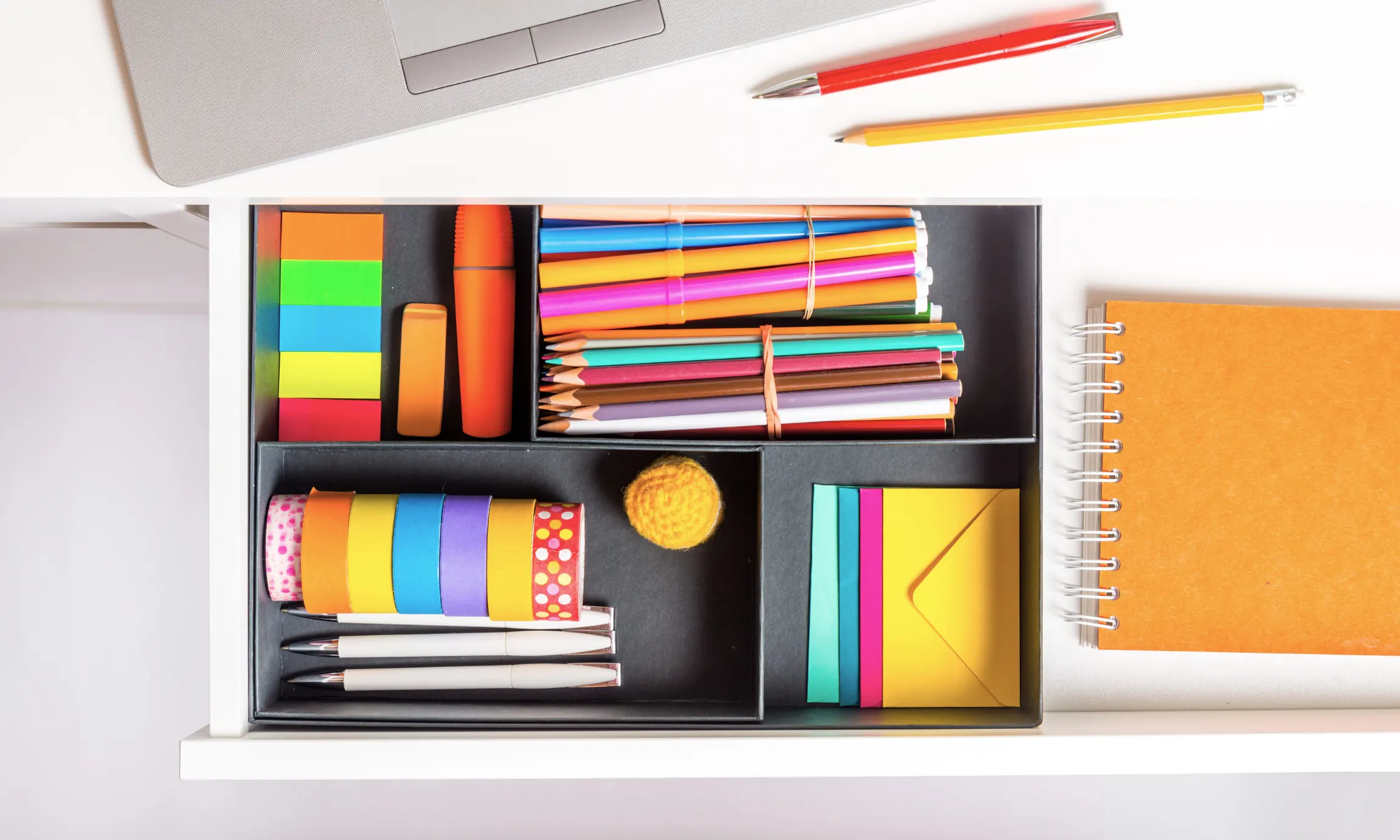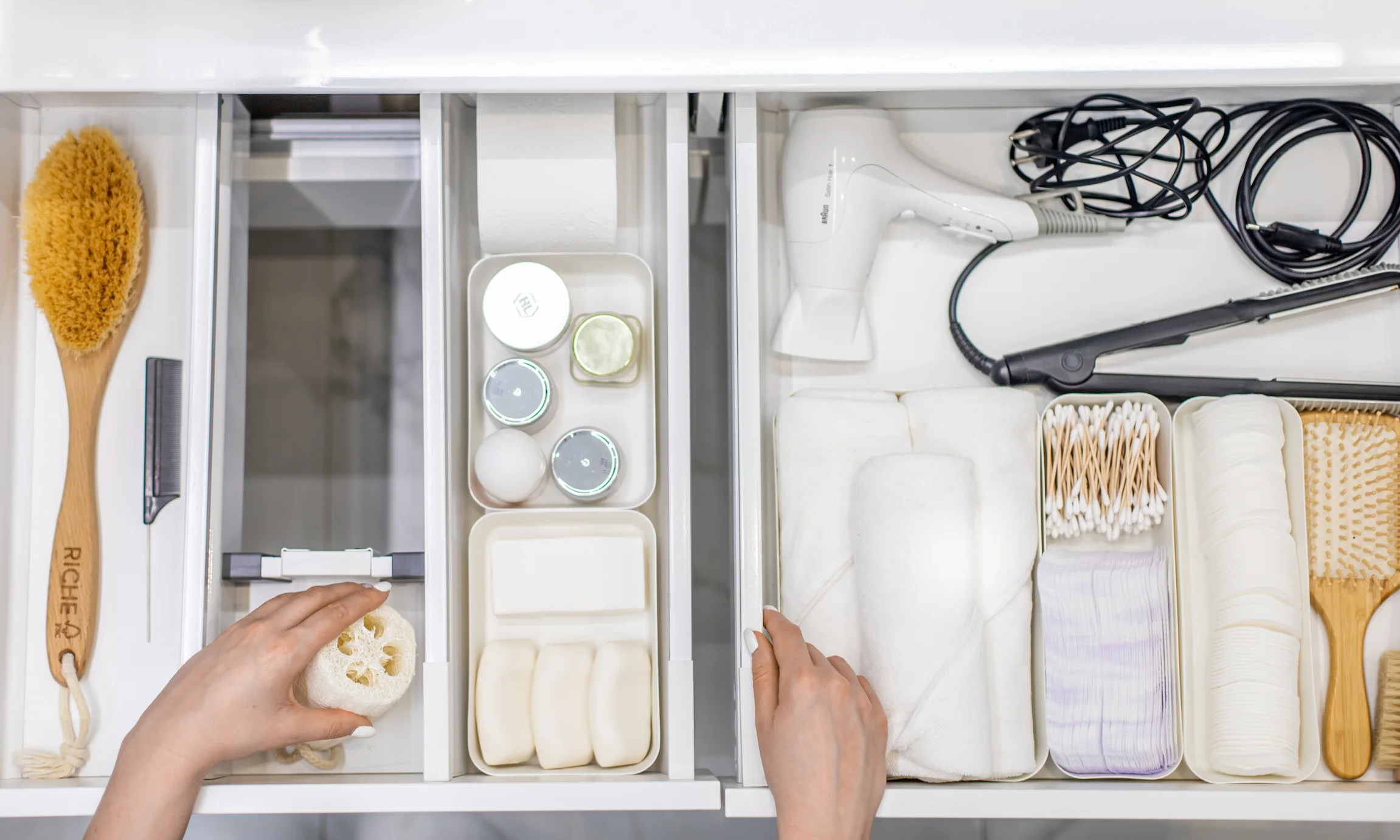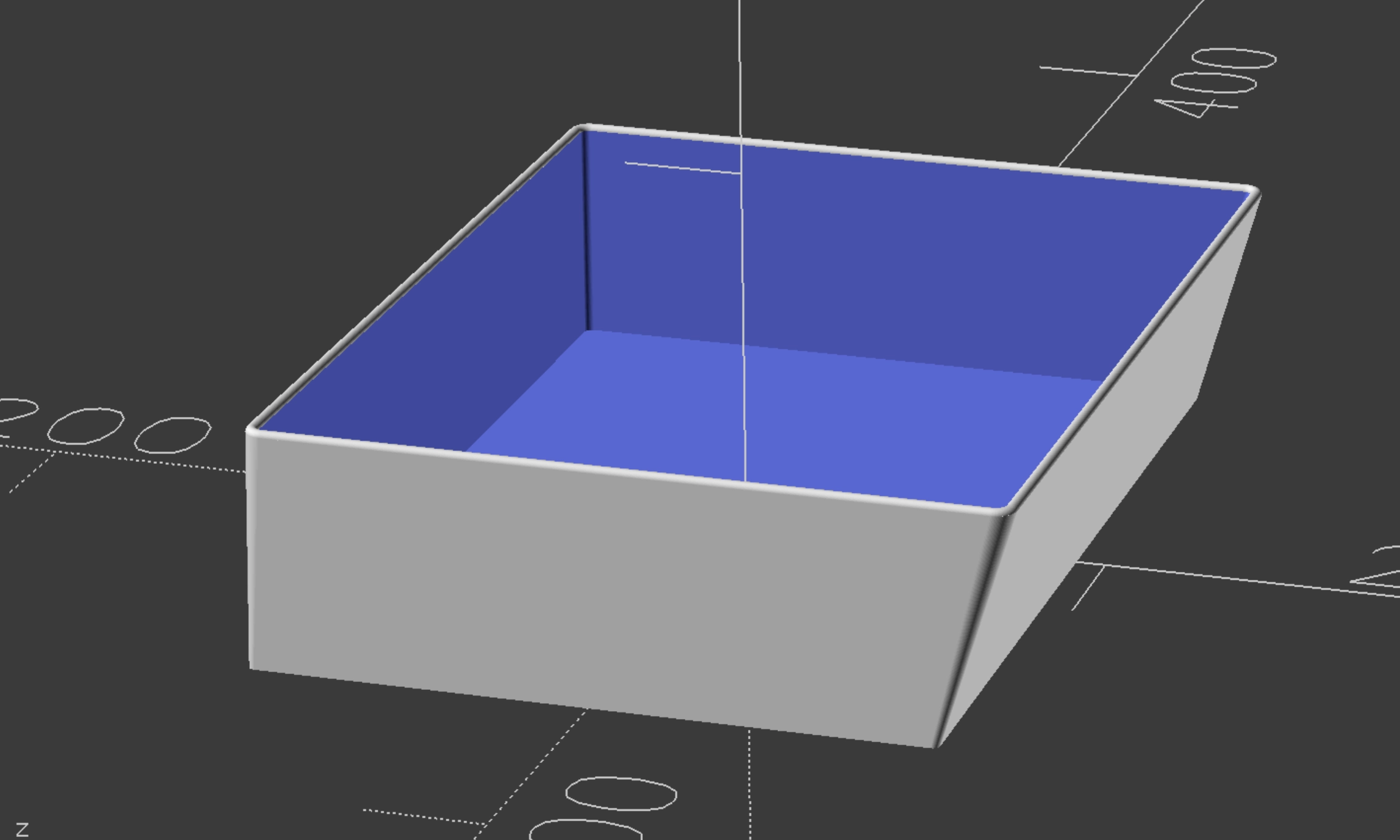
Desk drawers are chaos magnets. One minute they’re holding a pen and some paper clips; the next, you’re digging through receipts, tangled cords, and three rolls of tape you don’t remember buying.
To make sense of the mess and learn how to organize desk drawers, we turned to D’Nai Walker, a Professional Organizer based in the DC Metro Area and founder of D'Clutter by D’Nai. Her approach? Practical, personalized, and totally doable, even if you’ve got ADHD, kids, or zero patience for over-styled TikTok systems.
Let’s break it down.

First things first: empty the entire drawer. No shortcuts.
As D’Nai puts it, “It’s always beneficial to first determine what is actually supposed to live in the drawer, that way after you empty it and start putting things back, only the appropriate things return.”
This is about setting a clear boundary for what belongs—and what doesn’t. Once everything’s out, give the drawer a quick wipe-down. You’re starting fresh.
Not everything deserves top-drawer access.
“Think about which things you need to access most frequently and would like to be able to put away quickly,” D’Nai says. The top drawer is for your essentials—the tools you reach for every day.
The bottom drawers? That’s where backup supplies, extras, or occasionally used items can live. Don’t let infrequent tools hog the spotlight.

Before you even start looking at bins, figure out what categories actually exist in your drawer. Organizing your office supplies can be a task in and of itself, which is why creating categories is crucial. D’Nai typically separates items into groups like:
Having categories in place helps clarify what kind of storage solutions you'll need—and keeps you from tossing everything into a single, catch-all bin.
Here’s where most drawer organization fails: your organizers don’t actually fit.
D’Nai says, “I like to use any type of modular system that has multiple sizes for all of the different items that will live in the drawer. A mix of square and rectangular pieces in various sizes is great to create a space specific to your needs.” But before anything goes in, she always measures first.
That’s especially important for desk drawers, which are often annoyingly shallow. Off-the-shelf organizers might look cute, but if they’re too deep, they’re useless.
That’s why AnyDrawer makes organizers built to your drawer’s exact dimensions, even the shallow ones most products ignore. And if you're wondering how to organize deep desk drawers, such as those in the bottom of attached desk consoles, we can help you there as well. Whether you’re storing pens, sticky notes, or tech accessories, we create a custom setup that actually works with your space, not against it.

You don’t need to cram every odd-shaped thing into your main drawer.
“In the case of oddly shaped items or things that you don’t need to access often,” D’Nai explains, “I like to tuck them away on a shelf or in a basket or decorative bin.”
Translation: the drawer is for quick-access tools, not mystery items you use twice a year. If it doesn’t earn its spot, store it elsewhere.
Labeling isn’t for aesthetics—it’s for function.
“Labelling makes putting things away quickly easier,” D’Nai says, especially when more than one person is using the drawer. But if you don’t love the look of labels stuck to the front, she recommends placing a discreet one on the top edge or inside of the drawer.
The point is to make it obvious where things go—without disrupting your style.
D’Nai recently helped a client with ADHD who loved journaling—and had the supplies to prove it. “She had lots of notepads, colorful pens, markers, and stickers, on top of general office supplies,” D’Nai says.
The problem? Once things were out of sight, they were out of mind. So they built a labeled drawer system with clear categories, allowing both the client and her two pre-teen daughters to easily find and return items.
“It helped her put things away more efficiently and also gave reminders to her two pre-teen daughters that would also use the supplies.”
The end result wasn’t just a tidy drawer. It was a smoother routine.
Desk drawers are small, but their impact is big—especially if they’re a constant source of frustration.
So start with one. Clear it out, set some boundaries, and give every item a reason to stay. If you need organizers that actually fit, especially for shallow drawers, that’s what we’re here for.

